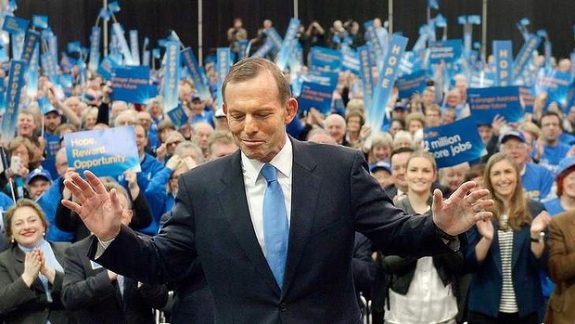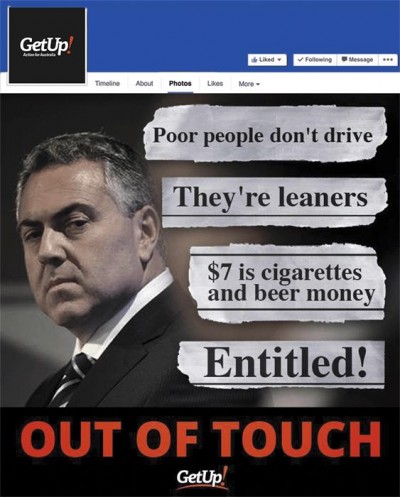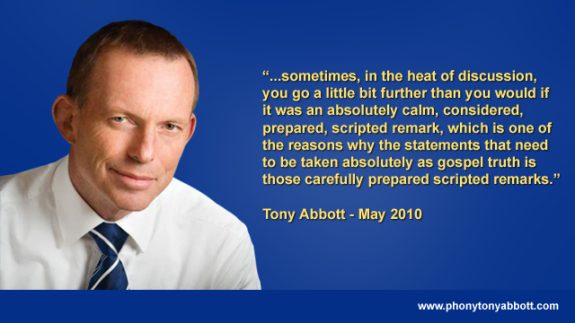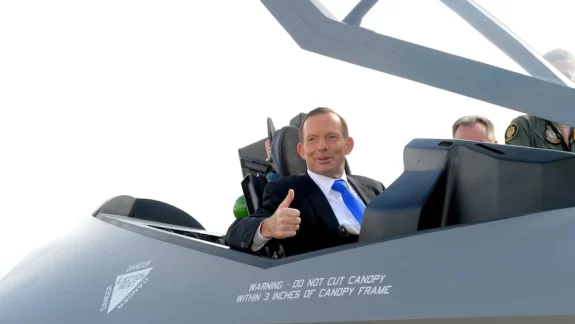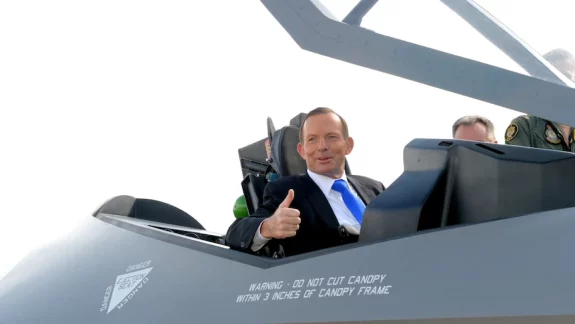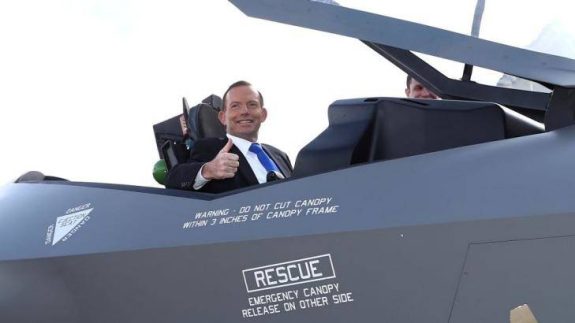Klaxons blaring

Before the election Tony Abbott said “I have given a commitment that we won’t spend more than $100 million on any single infrastructure project without a published cost-benefit analysis.”
As with most of what Tony said, this promise was quickly abandoned.
But what if this admirable level of transparency and accountability was applied to defence spending?
How much benefit will the nation receive from investing over $12 billion on fighter jets and $20 billion on submarines?
I have often asked the question as to just what our submarines do and when I read what SA Defence Industries Minister Martin Hamilton-Smith said the klaxons started blaring.
“It’s $250 billion on the table over the next 30 to 40 years on naval ships, including 120,000 man-years of work on the submarines alone,” he said. “We need to do that work here. It’s just gobsmacking to think that any government would not give that work to its own citizens.”
Whoa…..a quarter of a trillion dollars???? 120,000 man-YEARS?????? WTF????
Forget Ben Hur – this is bigger than the pyramids.
If we are going to invest that much one must ask….so what have our submarines ever done for us?
The Submarine Service has not seen combat since World War I.
Our first two submarines were built in Britain and arrived in Australia in 1914. They lasted less than a year.
The first was lost in September 1914, presumed wrecked on a reef during a practice dive in New Guinea. The second was ordered to the Mediterranean to support the British-led operations off the Galipoli peninsula in Turkey where it made four unsuccessful attacks on Turkish ships before being damaged by a Turkish gunboat and scuttled by her crew on 30 April.
These attacks are the only occasions an Australian submarine has fired in anger.
In 1919, the British government transferred six J Class submarines to Australia. The boats were in poor mechanical condition, however, and spent most of their service in refit. Due to Australia’s worsening economic situation, all of the boats were decommissioned in 1922, and were scuttled later in the decade.
In 1927, the British O Class submarines HMAS Oxley and HMAS Otway were commissioned. These submarines took over a year to sail from Portsmouth to Sydney due to numerous mechanical problems which delayed their delivery voyage.
Due to Australia’s poor economic situation, the O Class boats proved to be unaffordable and were placed in reserve in 1930, before transferring back to the Royal Navy in 1931. As a result, the Royal Australian Navy did not operate any submarines during World War II, though the obsolete Dutch submarine K.IX was commissioned as HMAS K9 on 22 June 1943 and was used for anti-submarine warfare training purposes. Due to the boat’s poor mechanical condition HMAS K9 saw little service with the RAN and spent most of her time in commission under repair, before being decommissioned on 31 March 1944 due to a lack of spare parts.
Following World War II the Royal Navy’s 4th Submarine Flotilla was based in Sydney from 1949 until 1969. The flotilla, which varied in size between two and three boats, was used to support the Royal Australian Navy and Royal New Zealand Navy in anti-submarine warfare training, with the operating cost split between the two nations. In the early 1960s, the British Government advised the Australian Government that reductions in the Royal Navy conventional submarine force meant that the 4th Flotilla was to return to the United Kingdom.
The impending withdrawal of the British submarine flotilla sparked the fourth attempt to establish an Australian submarine service. While the Department of Defence advised the government that three to six submarines should be purchased for training purposes, following the intervention of then-Senator John Gorton the Government instead approved the purchase of eight submarines to form a submarine strike force. Eight British Oberon class submarines were ordered in 1964, to be built in Scotland in two batches of four boats. Only six boats were delivered; the seventh and eighth were cancelled in 1971 to fund the acquisition of ten A-4 Skyhawk aircraft for the Fleet Air Arm.
The Oberons conducted surveillance missions against India and Communist nations in South East Asia during the Cold War. These missions were cancelled in 1992 when an Australian submarine became tangled in fishing nets and was forced to surface in the South China Sea.
The Oberon class boats were gradually decommissioned and replaced with new Collins class submarines during the 1990s. The six Collins class submarines were the first Australian-built submarines, and the most expensive ships to have been built in Australia.
Like the Oberon class, the Collins class submarines have conducted surveillance patrols. These patrols have included collecting intelligence on East Timor ahead of the Australian-led intervention into the then-Indonesian province in 1999.
While the Collins class submarines’ performance has improved over time, their maximum diving depth was permanently reduced following the near-loss of HMAS Dechaineux when a pipe burst during a practice dive in February 2003.
In early 2007, it was reported that Submarine Service was experiencing severe shortfalls in personnel and had only 70% of its authorised strength of 500 sailors. These shortfalls were reported to have reduced the service’s operational readiness and forced HMAS Collins to be temporarily withdrawn from service.
The Collins class submarines will begin to reach the end of their useful life from 2026.
So….it appears that our submarines are only used for training which we wouldn’t need if we didn’t have submarines, and surveillance which would surely be better carried out by satellites, electronic intercepts and drones than by submarines.
How likely are we to ever need a submarine “strike force”? Would we actually launch missiles or torpedoes against anyone considering our submarines haven’t seen action since 1915?
If we can’t fill the 500 positions we currently have for submariners, where will we find the personnel for 6 extra vessels?
If we aren’t building them here then an awful lot of money is going out of our economy for no employment benefit beyond a few maintenance crew.
My verdict: This is a ridiculous waste of a huge amount of money for no discernible benefit on something that most likely will never be needed and may well be obsolete before it is built.









